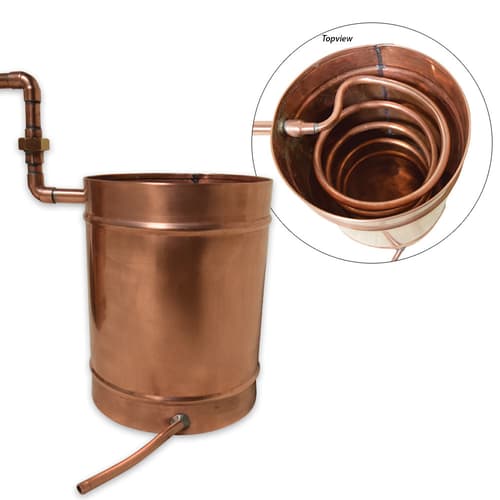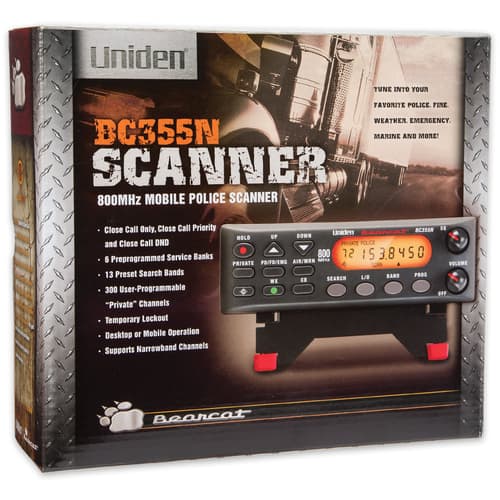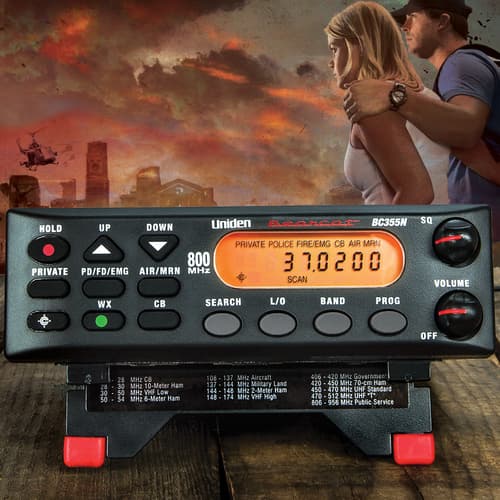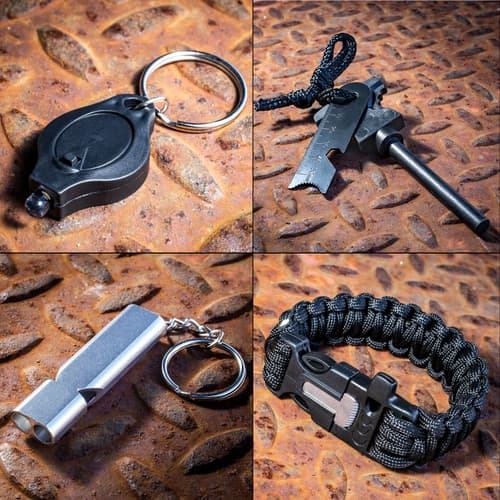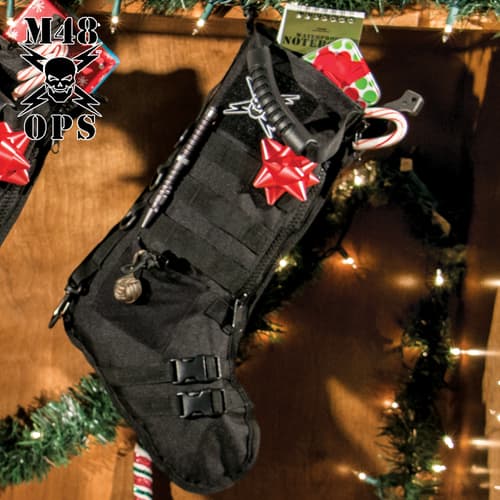Beginner's Guide To Emergency Food Supply Prepping
Beginner's Guide To Emergency Food Supply Prepping

By Adelia Ladson
When you first start thinking about prepping for future disasters, either natural or manmade, it can be a little overwhelming. As you don't know what form an emergency could take that upsets your life and interferes with your survival, it seems like a daunting job to pinpoint what items you should stock-up on or buy for your prep. There are so many variables when it comes to disasters and the types that you feel like you have to plan for every contingency: fire, flood, war or collapse of civilization. Have I put you off of prepping yet? Don't worry! There is one thing that you can prep that you can count-on to be a necessity in any situation. If, at the very least, you have stocked-up on it, you're already pretty far along in your prepping. That one item is: food.
Emergency Food Supply
Starting your prepping journey with one of the most important items is the way to go. You can't eat toilet paper or batteries. A well-stocked emergency food supply guarantees that you'll have the much-needed calories to survive a disaster. There are different ways that you can go about it and there are lots of great companies out there that specialize in emergency food. I'm going to break it up into three categories: MRE's, entrée pouches and canned staples.
MRE's
Meals-Ready-To-Eat, shortened to MRE's, were first invented for the military, with the earliest forms making their appearance as rations, some time during W.W.I, and steadily improved over the following decades. The MRE's of today were developed in 1983 and a flameless heater was added in 1990. Basically, a tough pouch that gives the meal a long shelf-life contains an entrée, drink mix, a dessert, snacks and utensils.
MRE 12-Pack
The MRE 12-Pack is the closest you'll get to the military-style rations. Each of the 12 aluminum thermostabilized pouches has an average of 1,100 to 1,300 calories contained inside and an 8-year shelf-life. All of the contents are fully cooked and can be eaten either hot or cold. Inside a pouch you'll find an 8-oz entree, a 2-oz packet of mixed nuts and raisins, a 2-oz packet of dried fruit, sugar cookies, a drink mix, coffee, sugar, creamer, salt and pepper, spoon, napkin and a wet towel.
XMRE Blue Line Meals
A good example of commercial-style MRE's, the made-in-the-USA XMRE Blue Line Meals were specifically made for medical facilities, universities and emergency preparedness agencies. Medical professionals were consulted on their formulation and contents so that they give you balanced carbohydrates to help you regain the energy that you need when it really counts. The hydration packs also have added electrolytes to help you maintain your health stability during an emergency situation. There are 12 meals in the case and each of the pouches contains, along with the entrée, a bread item, 2-3 snack/side/dessert items, 1-2 beverages, and an accessory pack.
Shop Products Here:
Entrée Pouches
For a civilian emergency food supply, there are kits with a variety of just entrée pouches. These meals tend to be a little more gourmet and offer more choices. They are designed to be reconstituted with hot water and can be eaten in the pouch, if necessary. The kit will usually contain breakfast, lunch and supper options in servings of two and four. Entrée pouches are very popular as fare for camping and hiking trips.
Ready Hour Four-Week Emergency Food Supply
Grown and packaged in Salt Lake City, Utah, Ready Hour has a long history of providing calorie-rich and delicious meals that you can count on in an emergency. I consider them the Cadillac of entrée pouch meals. The Ready Hour Four-Week Emergency Food Supply contains 256 servings total, which is enough for one person for four weeks at 2,000 calories a day. With these hearty meals, you get all the vitamins, protein and calories that you'll need to not only survive but thrive. The breakfast, lunch and supper entrées include mac and cheese, traveler’s stew, creamy stroganoff, homestyle potato soup, cheesy broccoli and rice soup, and black bean soup. The quick and easy side dishes include creamy chicken-flavored rice, Southwest rice long grain white rice and mashed potatoes. The hot-and-hearty breakfasts include buttermilk pancakes, Maple Grove Oatmeal, strawberry-flavored creamy wheat, and powdered milk. The sweet snacks and desserts include banana chips and chocolate pudding. Finally, an orange energy drink mix is included. The kit has a 25-year shelf-life.
Emergency Essentials One Month Food Kit
The Emergency Essentials One Month Food Kit comes in as a close second in my book when it comes to the pouch meals. It also has a 25-year shelf-life so that it's ready when disaster strikes and is contained in easy-to-transport pails that can be picked-up and thrown in the car if you have to bug-out. The focus of these entrées are to offer a maximum amount of protein to keep you energized when times are stressful. It provides 2,011 calories for one person, per day for 30 days and more than 43 grams of protein per day. The company also understands that food can bring comfort and a sense of normalcy, so they have included homestyle favorites. The meals included are black bean soup, buttermilk pancake, creamy stroganoff, Southwest rice, mushroom rice pilaf, strawberry flavored creamy wheat, Maple Grove Oatmeal, Homestyle Potato Soup, Creamy Chicken Flavored Rice, Cheesy Broccoli and Rice Soup, Traveler’s Stew, long grain white rice, mac and cheese and an orange energy drink mix.
Shop Products Here:
Canned Staples
Your emergency food supply should be stocked with plenty of staples. Canned staples are the best because they stock neatly and will keep rodents and moisture out of your food. You can find a lot of staples like powdered milk, butter, eggs and rice out there, however, beware of low-quality products. Below are what I consider to be the top canned emergency food on the market.
Emergency Essentials Non-Fat Dry Milk
Starting with a basic staple that you need for cooking and nutrition, you need a stock of instant, dry milk. Along with its food kits, Emergency Essentials also puts out a line of canned emergency food. The company's Non-Fat Dry Milk is 100% real skim milk contained in a large can that has a 20-year shelf-life and directions for different servings are on the can. Unlike some dry milks that leave a chalky aftertaste, the innovative drying method that Emergency Essentials uses results in milk that tastes natural and delicious any way you use it. Just add water to mix up a cold glass of milk or to pour over a bowl of hot cereal and it even works great for baking.
Future Essentials Powdered Butter
Butter is an energy- and protein-rich fundamental staple and few things are more indispensable. It's the next basic staple that you need to have in your emergency food supply for cooking and food prep and the Future Essentials Powdered Butter is an American-canned, high-quality option. All that's needed is warm water to reconstitute it or it can be added directly to dishes in its powdered form. When properly stored, it will stay safe and delicious for 25-plus years.
Emergency Essentials Honey Crystals
You can include sugar in your prep as long as it's packaged in pest and waterproof containers. A much better option, though, is the Emergency Essentials Honey Crystals. You can sprinkle the crystals in hot or cold drinks as a sweetener or rehydrate them for actual, smooth honey. They can be used in any recipe that needs sugar including baked goods and meat marinades. There are 240 servings in the can and packaged to store for 30 years, the honey crystals will be just as delicious now as they will down the road.
Ready Hour Whole Egg Powder
Ready Hour also offers canned staples in steel cans that are ready for long-term storage in your emergency food supply. They have Whole Egg Powder that can be used in recipes and just simply scrambled for breakfast. The freeze-dried eggs are easy to prepare with an equal warm water to powder ratio for the number of eggs you want or need. Eggs are an important source of protein that must be included in your prep.
Emergency Essentials White Rice
Just plain old white rice is also a must for your food prep because it's so versatile and is a good source of thiamine and folate. Use the Emergency Essentials White Rice as a side dish, in a casserole or any recipe that calls for it. Just water and bring it to a boil then, reduce the heat and cook it until it's done. There are 47 total servings in the can, offering 141 grams of protein, as well. You can enjoy the grain staple years from now with its 30-year shelf-life.
Emergency Essentials Mashed Potatoes
Mashed potatoes are also a good, versatile staple for your emergency food supply as they can also be eaten as a side dish or be added to a casserole. I go back to Emergency Essentials for their Canned Mashed Potatoes since they whip up nicely and taste great! The large can contains 32 total servings that can be stored on your shelf for 25 years so that you can have this comfort food in the worst situations.
Emergency Essentials Ground Beef
Our bodies need two essential ingredients to help us survive: water and protein. Like I said above, it will keep you energized and it's essential as a building block for your cells. Protein is not produced naturally, so we have to get it from the food that we eat. So, my list of canned staples wouldn't be complete without canned meat. If Mother Nature made a perfect survival food, then Emergency Essentials Ground Beef would be it. This will be the most important food in your emergency food supply because it’s so versatile and it’s the king of complete proteins. A special seasoning gives it a simmered-in-its-own juices succulence that will keep you coming back for more. With just a little hot water, you can have fully cooked beef in just five minutes, and you can cook it a hundred different ways. You can make delicious tacos, casseroles, burritos, meat pies, soups, stews, sandwiches, pasta sauces and chili. The possibilities are endless! The freeze-drying process helps lock in the 30-year shelf-life by removing moisture without damaging the cellular structures of the beef and there are 6 ozs in the can.
Emergency Essentials Cooked White Chicken
You can also count on Emergency Essentials for chicken, which is such an essential part of most family’s diets. It’s a healthy choice of protein and many other nutrients that your body needs. Emergency Essentials Cooked White Chicken is cubed into half-an-inch pieces, making them perfect for pasta to stir-fry dishes and soups to salads. The freeze-dried, cooked chicken has a shelf-life of 25 years and there’s a total of 4 ozs in the can. The most popular canned poultry in the world wants to be part of your emergency meals!
Ready Hour Peanut Butter Powder
Ready Hour Peanut Butter Powder is also a great source of protein, vitamin E, and manganese and is also an excellent source of fiber and energy. Simply put, peanut butter powder can positively fit into your healthy eating plan and is a necessity in your food storage plan. The powder mixes into a creamy peanut butter spread that gives you 65 servings of a nutritious, tasty, nutty delight that can top your favorite bread or eaten with fruit as a snack.
Shop Products Here:






